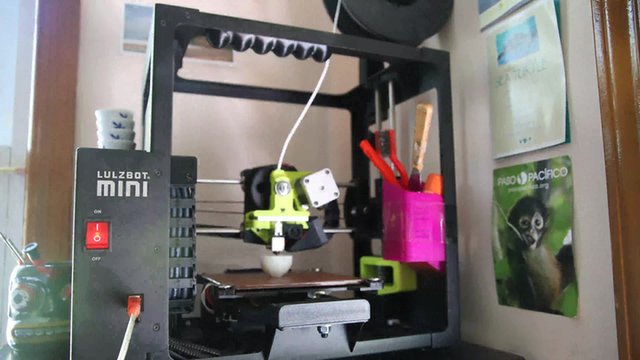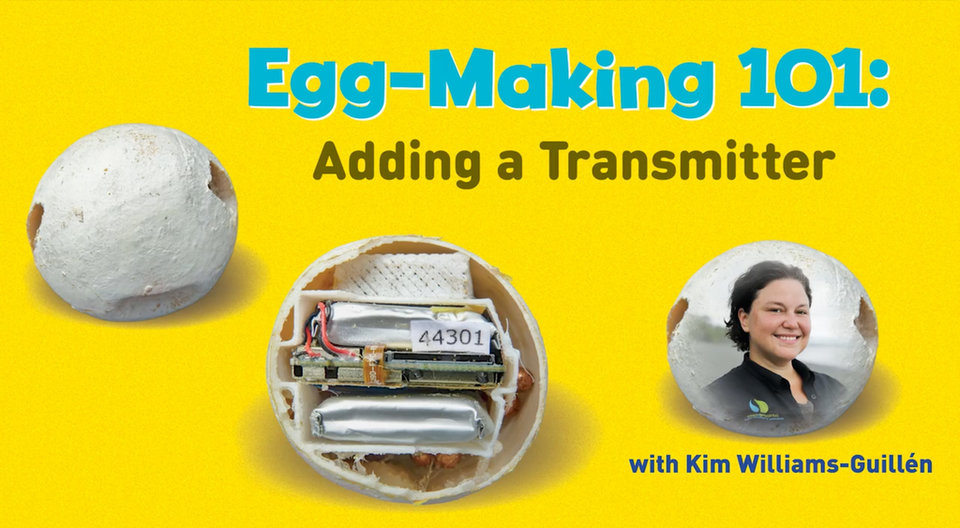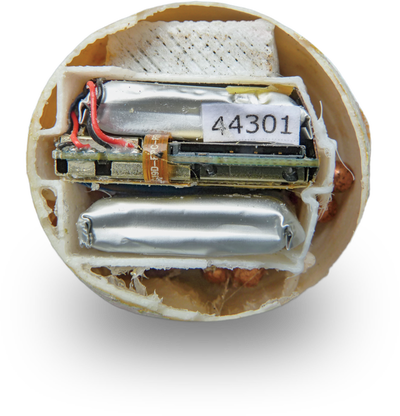Lookingfor
aSolution
KimWilliams-Guillénhadbeenwatchingacoupleoftelevisionshows.Inbothshows,tinyGPStrackerswerehiddenineverydayitemstotrackdown“badguys.”Hmmmm,shethought,that’snotabad idea….
Williams-GuillénisanecologistandthedirectorofconservationscienceforPasoPacífico.It’saCalifornia-basedgroupthatprotectsbiodiversityinCentralAmerica.Sheknewseaturtleeggswerepoached,buttherewassomuchshedidn’tknow.Wheredidthepoachersgo?Whowasbuyingtheeggs?Sheneededawaytotrackthepoachers. Whatifshecreatedafaketurtleeggwithatrackingdeviceinitandputitinafreshseaturtlenest?Ifitlookedrealenough,poachersmightnot notice.
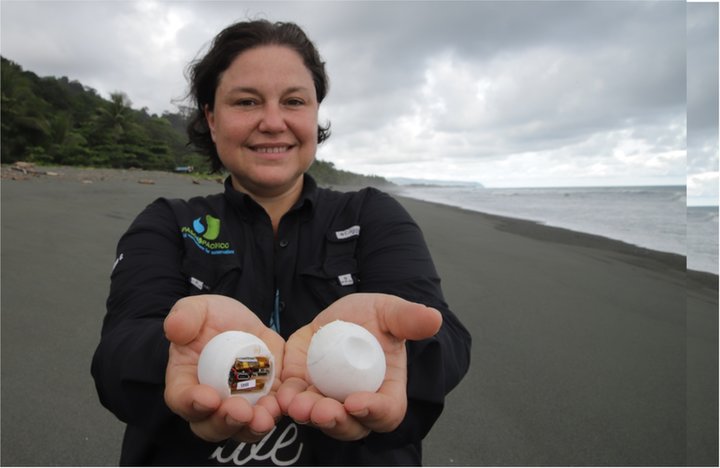
KimWilliams-Guillénholdsfaketurtleeggswithtrackers inside.
atime-lapsevideoofegg printing
ANewIdea
PasoPacíficosubmittedthisidea,nowknownastheInvestEGGator,totheWildlifeCrimeTechChallenge.Itwasselectedin2016asoneof16winnersoutof300 applicants.Theprizemoneywasusedtohelpdevelopthefirstprototypeforthefake eggs.
ArealseaturtleeggisaboutthesizeofaPing-Pongball,andithasasmalldentinit.It’snotcoveredinahardshell,likeabird’segg.Instead,it’sslightlysquishywithathin,butnotbrittle,shell.Togetasomewhatflexible— almostrubbery—feel,Williams-Guillénneededtofindtherightsortof plastic.
Shetestedseveralmaterialsbeforefindingtherightone.Sheuseda3-Dprintertoproducethefakeegg.Ittookabout90 minutestoprint.Aftersometrialanderror,shewasabletocreatejusttherightsizeandfeelforthephonyegg.Butitstilldidn’tlookquiteright.Inarealegg,theyellowoftheyolkalmostshinesthroughthethin,whiteshell.It’shardto replicate.
Williams-Guillénknewsheneededexpertguidance.So,shecontactedLaurenWilde,aspecialeffectsandmakeupartistinLosAngeles,California.Wildetooktheprintedeggsandsandedthemtomakethemsmooth.Thensheapplieddifferentcoatsofpaintandgluetogettheright color.
Fromtheoutside,thefakeeggslookalmostidenticaltorealones.You’dhaveahardtimetellingthedifferenceifsomeonehandedyouabasketwith both.
LaurenWildeinspectsoneofthefakeseaturtle eggs.
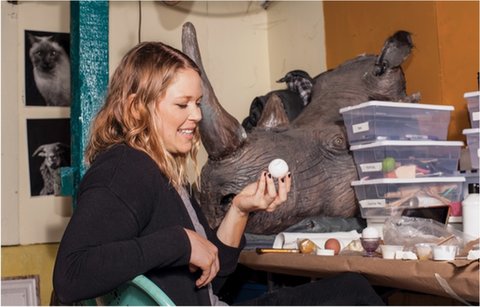
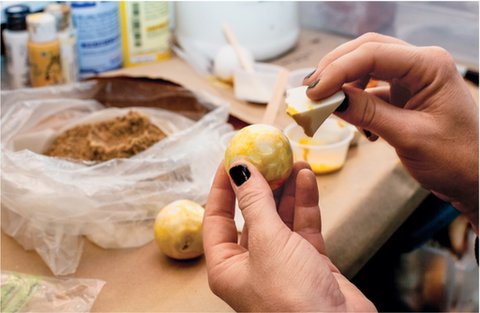
HollywoodmakeupartistLaurenWildeusespaintandglueonthefalseseaturtleeggstomakethemlookmore realistic.

Thefakeeggsarehardtospot.Onewasplacedontopofthis nest.
Butontheinside,thefakeeggispackedwithanantenna,abattery,andelectronicssimilartowhatyou’dfindinacellphone.Theseelectronicsconnecttotheinternet.Theyrevealthedateandtimethattheeggisataparticular location.
So,notonlycantheteamtracktheegg,theycanalsofigureouthowfasttheeggismoving.Thatmayhelpthemdeterminethemodeoftransportationthatisbeingusedtomovetheegg.Istheeggbeingcarriedonfoot?Drivenina vehicle?
Eachfakeeggcostsabout$40tomake.Williams-Guillénneededtomakeseveralandtesttheminthefield.Luckily,PasoPacíficowasawardedanotherprizefromtheWildlifeCrimeTechChallengetofurtherdevelopthe project.
Eachfakeeggweighsasmuchasarealegg,butitisstuffedwithatracking device.
